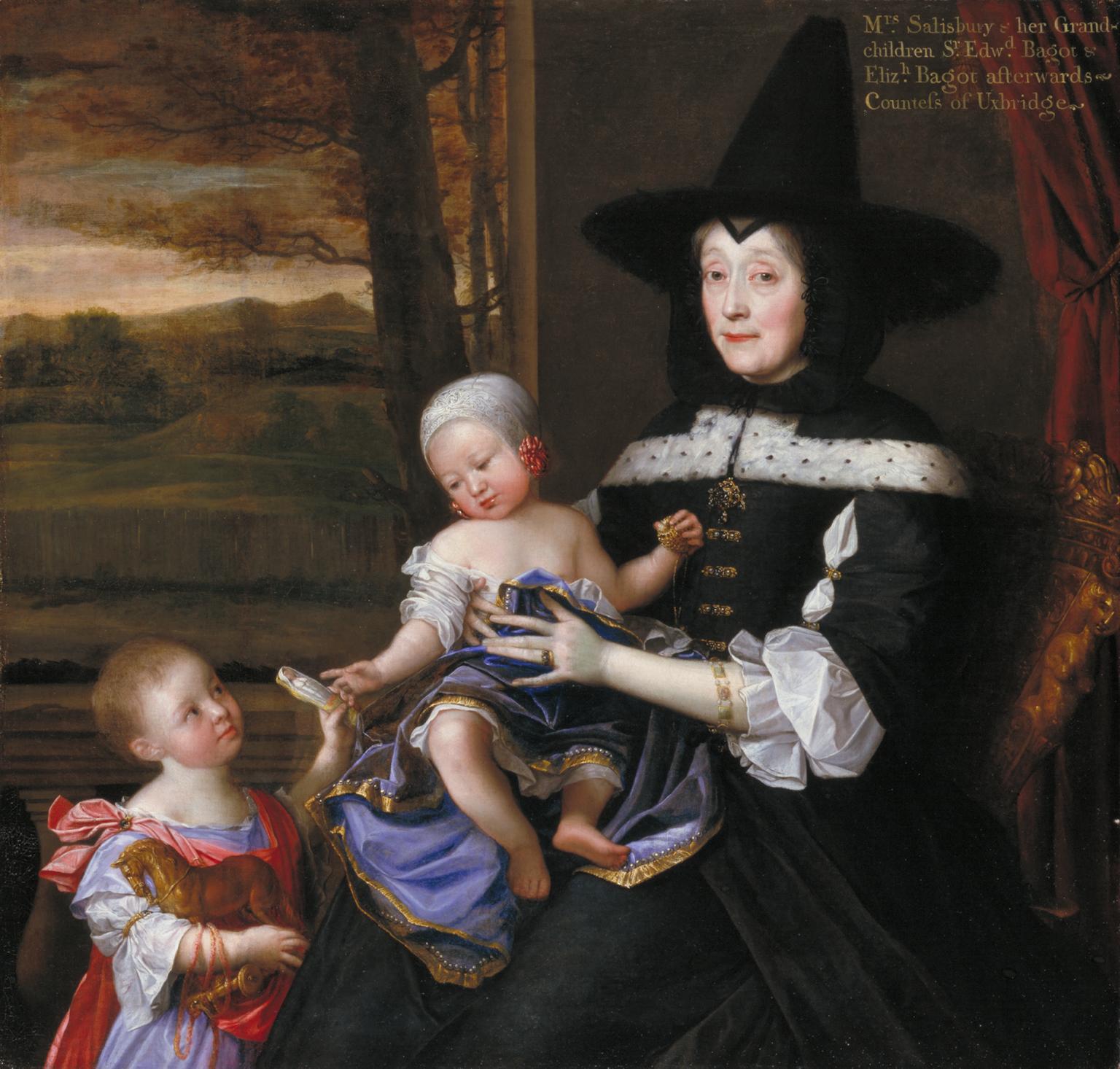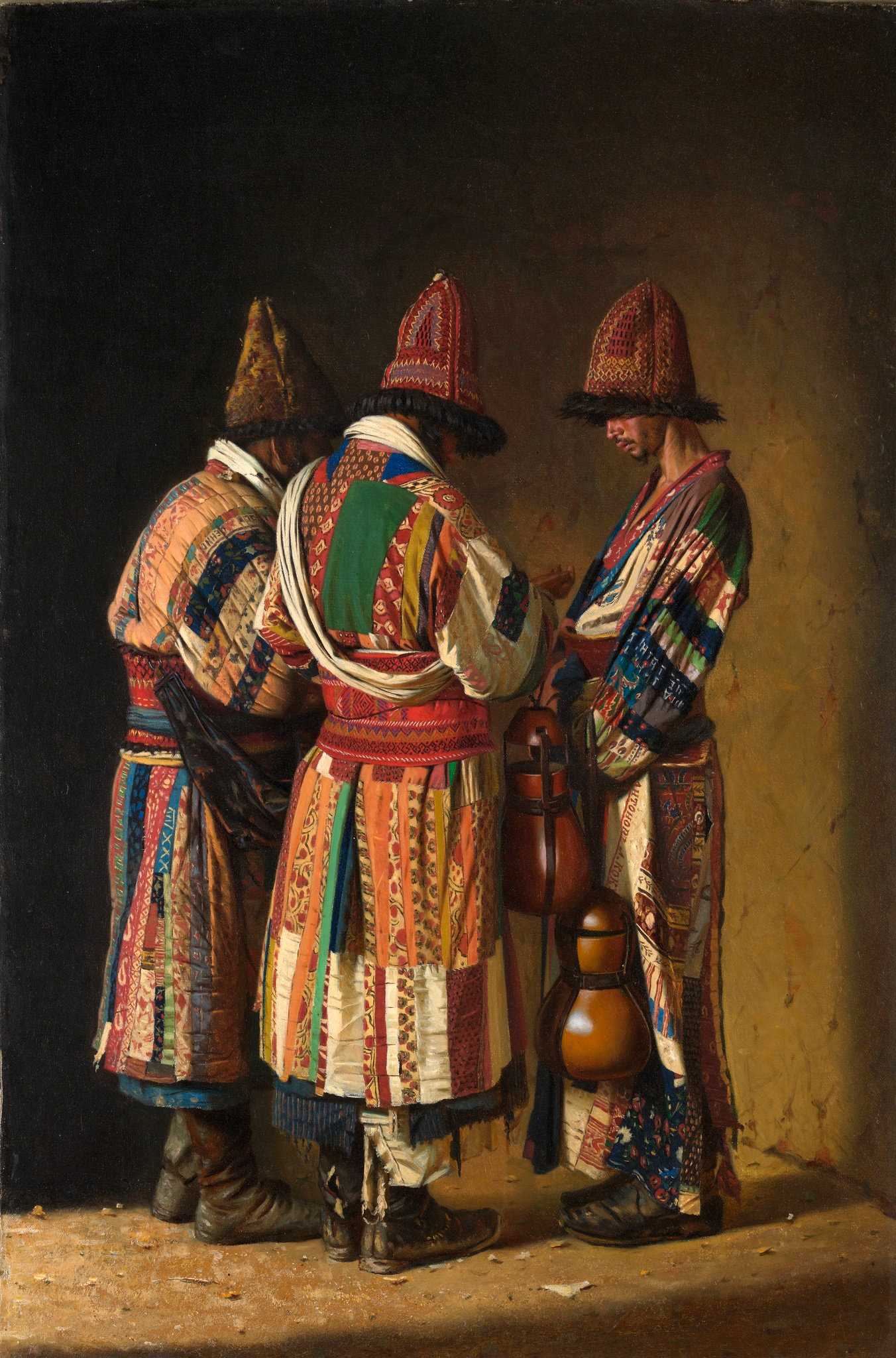|
Bashlyk
A bashlyk, also spelled bashlik ( krc, Başlıq, Adyghe: ''Shkharkhon,'' Abkhaz: ''qtarpá'', Chechen: ''Ċukkuiy,'' Ossetic: ''Kaskæ'' crh, Başlıq, Tatar: Başlıq, Turkish: Başlık; "baş" - head, "-lıq" (''Tatar'') / "-lık" (''Turkish'') - derivative suffix)'','' is a traditional Turkic, Caucasian, Iranian, and Cossack cone-shaped headdress hood, usually of leather, felt or wool, an ancient round topped felt bonnet with lappets for wrapping around the neck. Local versions determine the trim, which may consist of decorative cords, embroidery, jewelry, metallized strings, fur balls or tassels. Among dozens of versions are winter bashlyks worn atop regular headdress, cotton bashlyks, homeknitted bashlyks, silk bashlyks, scarf bashlyks, down bashlyks, dress bashlyks, jumpsuit-type bashlyks, etc. Bashlyks are used as traditional folk garment, and as uniform headdress. A variation of bashlyks is a Kalpak (Qalpaq), a cone-shaped headdress without lappets, mostly made ... [...More Info...] [...Related Items...] OR: [Wikipedia] [Google] [Baidu] |
Pointed Hat
Pointed hats have been a distinctive item of headgear of a wide range of cultures throughout history. Although often suggesting an ancient Indo-European tradition, they were also traditionally worn by women of Lapland, the Japanese, the Mi'kmaq people of Atlantic Canada, and the Huastecs of Veracruz and Aztec (e.g., as illustrated in the Codex Mendoza). The Kabiri of New Guinea have the ''diba'', a pointed hat glued together. History The conical hat is known to have existed as early as the Bronze Age in the Middle East, Eurasia, and Central Europe. Conical hats were recorded in ancient Egypt, especially when depicting Osiris and pharaohs, who emulated Osiris' iconography. Conical hats were also recorded by many Indo-European civilizations. Golden hats have been recorded in burial sites in Central Europe. The Scythians of the Eurasian steppes were noted for having pointed hats, often mentioned by other civilizations, such as in the DNa inscription on the tomb of Darius the ... [...More Info...] [...Related Items...] OR: [Wikipedia] [Google] [Baidu] |
Budenovka
A budenovka ( rus, будёновка, r=budyonovka, p=bʊˈdʲɵnəfkə) is a distinctive type of hat, an archetypal part of the Communist military uniforms of the Russian Civil War following the Russian revolution (1917–1922) and later conflicts. Its official name was the "broadcloth helmet" (шлем суконный). Named after Red Army cavalry commander Semyon Budyonny, it was also known as the "frunzenka" after the Commissar Mikhail Frunze. It is a soft, woolen hat that covers the ears and neck. The cap features a peak and folded earflaps that can be buttoned under the chin. History The hat was created as part of a new uniform for the Russian army by Viktor Vasnetsov, a famous Russian painter, who was inspired by the Kievan Rus' helmet. The original name was ''bogatyrka'' (богатырка) – the helmet of a bogatyr – and was intended to inspire Russian troops by connecting them with the legendary heroes of Russian folklore. Bogatyrkas were meant to be a part ... [...More Info...] [...Related Items...] OR: [Wikipedia] [Google] [Baidu] |
Kalpak
Calpack, kalpak, or qalpaq ( kaa, калпак, tr, kalpak ; kk, қалпақ, ky, калпак, both ; bg, калпак; el, καλπάκι ('); pl, kołpak; uk, ковпак, ') is a high-crowned cap (usually made of felt or sheepskin) worn by Circassians, Dagestanis, Chechens, men in Turkey, Ukraine, the Balkans and throughout Central Asia and the Caucasus. The kalpak is used to keep the head warm in winter and shade out the sun during summer. There are different kalpaks for different seasons, with kalpaks used in winter being thicker and the ones used in summer being thinner but broader for shading purposes. There are many styles of kalpak. They usually can be folded flat for keeping or carrying when not being worn. The brim can be turned up all the way around. Sometimes there is a cut in the brim so that a two-pointed peak can be formed. Plain white ones are often reserved for festivals and special occasions. Those intended for everyday use may have a black velvet ... [...More Info...] [...Related Items...] OR: [Wikipedia] [Google] [Baidu] |
Lycian Dynast Kherei Wearing An Achaemenid Bashlik
Lycian may refer to: * Lycia, a geopolitical region in Anatolia (now Turkey); * Lycian Apollo, a type of ancient Greek statuary; * Lycian Way, a hiking trail in southwestern Turkey; * Lycian Way Ultramarathon, an annual ultra-marathon in Lycian Way ; * Lycians, people who lived in Lycia; * extinct languages formerly spoken in Lycia, i.e. ** the Lycian language, also known as and ** the Milyan language, formerly known as or, sometimes, ; * the Lycian alphabet, used to write the Lycian language; * Lycian (Unicode block), the Unicode characters comprising the Lycian script See also * Lucian (other) Lucian (c. 125 – after 180) was a Roman rhetorician and satirist. Lucian or Saint Lucian may also refer to: People known as Saint Lucian * Lucian of Antioch (c. 240–312), Christian theologian, martyr and saint * Lucian of Beauvais (died c. 2 ... * Lycia (other) {{disambiguation Language and nationality disambiguation pages ... [...More Info...] [...Related Items...] OR: [Wikipedia] [Google] [Baidu] |
Karakalpakstan
Karakalpakstan, / officially the Republic of Karakalpakstan, / is an autonomous republic of Uzbekistan. It occupies the whole northwestern part of Uzbekistan. The capital is Nukus (' / ). The Republic of Karakalpakstan has an area of , and a population of about two million. Its territory covers the classical land of Khwarezm, which in classical Persian literature was known as (). History From about 500 BC to 500 AD, the region of what is now Karakalpakstan was a thriving agricultural area supported by extensive irrigation. It was strategically important territory and fiercely contested, as is seen by the more than 50 Khorezm Fortresses which were constructed here. The Karakalpak people, who used to be nomadic herders and fishers, were first recorded by foreigners in the 16th century. Karakalpakstan was ceded to the Russian Empire by the Khanate of Khiva in 1873. Under Soviet rule, it was an autonomous area within the Russian Soviet Federative Socialist Republic befo ... [...More Info...] [...Related Items...] OR: [Wikipedia] [Google] [Baidu] |
Kausia
The kausia ( grc, καυσία) was an ancient Macedonian flat hat. Background It was worn during the Hellenistic period but perhaps even before the time of Alexander the Great and was later used as a protection against the sun by the poorer classes in Rome. Depictions of the kausia can be found on a variety of coins and statues found from the Mediterranean to the Greco-Bactrian kingdom and the Indo-Greeks in northwestern Indus. The Persians referred to both the Macedonians and the rest of the Greeks as "Yauna" ( Ionians), but made a distinction between "Yauna by the sea" and those "with hats that look like shields" (''yauna takabara''), probably referring to the Macedonian kausia hat. According to Bonnie Kingsley the kausia may have came to the Mediterranean as a campaign hat worn by Alexander and veterans of his campaigns in the Indus but according to Ernst Fredricksmeyer the kausia was too established a staple of the Macedonian wardrobe for it to have been imported from ... [...More Info...] [...Related Items...] OR: [Wikipedia] [Google] [Baidu] |
Reply Of The Zaporozhian Cossacks
''Reply of the Zaporozhian Cossacks'' is a painting by Ilya Repin. It is also known as ''Cossacks of Saporog Are Drafting a Manifesto'' and in Russian, (russian: Запорожцы пишут письмо турецкому султану, Zaporozhtsy pishut pis'mo turetskomu sultanu, lit=Cossacks write a letter to the Turkish sultan). Repin began the 2.03 m (6 foot 8 inch) by 3.58 m (11 foot 9 inch) canvas in 1880 and finished in 1891. His study drawings he made in stanitsa Pashkovskaya (today within Krasnodar), Yekaterinoslav (today Dnipro), and Kachanivka. He recorded the years of work along the lower edge of the canvas. Alexander III bought the painting for 35,000 rubles. Since then, the canvas has been exhibited in the State Russian Museum in Saint Petersburg with another version by Repin in the Kharkiv Art Museum in Kharkiv, Ukraine. Context Historicity ''Reply of the Zaporozhian Cossacks'' depicts a supposedly historical ... [...More Info...] [...Related Items...] OR: [Wikipedia] [Google] [Baidu] |
White Army
The White Army (russian: Белая армия, Belaya armiya) or White Guard (russian: Бѣлая гвардія/Белая гвардия, Belaya gvardiya, label=none), also referred to as the Whites or White Guardsmen (russian: Бѣлогвардейцы/Белогвардейцы, Belogvardeytsi, label=none), was a common collective name for the armed formations of the White movement and anti-Soviet governments during the Russian Civil War. They fought against the Red Army of the Bolsheviks. When it was created, the structure of the Russian Army of the Provisional Government period was used, while almost every individual formation had its own characteristics. The military art of the White Army was based on the experience of the First World War, which, however, left a strong imprint on the specifics of the Civil War. History The name "White" is associated with white symbols of the supporters of the pre-revolutionary order, dating back to the time of the French Revolution, ... [...More Info...] [...Related Items...] OR: [Wikipedia] [Google] [Baidu] |
Imperial Russian Army
The Imperial Russian Army (russian: Ру́сская импера́торская а́рмия, Romanization of Russian, tr. ) was the armed land force of the Russian Empire, active from around 1721 to the Russian Revolution of 1917. In the early 1850s, the Russian Army consisted of more than 900,000 regular soldiers and nearly 250,000 irregulars (mostly Cossacks). Precursors: Regiments of the New Order Tsar#Russia, Russian tsars before Peter the Great maintained professional hereditary musketeer corps known as ''streltsy''. These were originally raised by Ivan the Terrible; originally an effective force, they had become highly unreliable and undisciplined. In times of war the armed forces were augmented by peasants. New Order Regiments, The regiments of the new order, or regiments of the foreign order (''Полки нового строя'' or ''Полки иноземного строя'', ''Polki novovo (inozemnovo) stroya''), was the Russian term that was used to describe mi ... [...More Info...] [...Related Items...] OR: [Wikipedia] [Google] [Baidu] |
Bashkirs
, native_name_lang = bak , flag = File:Bashkirs of Baymak rayon.jpg , flag_caption = Bashkirs of Baymak in traditional dress , image = , caption = , population = approx. 2 million , popplace = 1,584,554 1,172,287 , region2 = , pop2 = 41,000 , ref2 = , region3 = , pop3 = 58,500 , ref3 = , region4 = , pop4 = 4,253 , ref4 = , region5 = , pop5 = 1,200 , ref5 = , region6 = , pop6 = 8,000 , ref6 = , region7 = , pop7 = 610 , ref7 = , region8 = , pop8 = 300 , ref8 = , region9 = , pop9 = 400 , ref9 = , region10 = , pop10 = 112 , ref10 = , region11 = , pop11 = 1,111 , ref11 ... [...More Info...] [...Related Items...] OR: [Wikipedia] [Google] [Baidu] |
Napoleonic War
The Napoleonic Wars (1803–1815) were a series of major global conflicts pitting the French Empire and its allies, led by Napoleon I, against a fluctuating array of European states formed into various coalitions. It produced a period of French domination over most of continental Europe. The wars stemmed from the unresolved disputes associated with the French Revolution and the French Revolutionary Wars consisting of the War of the First Coalition (1792–1797) and the War of the Second Coalition (1798–1802). The Napoleonic Wars are often described as five conflicts, each termed after the coalition that fought Napoleon: the Third Coalition (1803–1806), the Fourth (1806–1807), the Fifth (1809), the Sixth (1813–1814), and the Seventh (1815) plus the Peninsular War (1807–1814) and the French invasion of Russia (1812). Napoleon, upon ascending to First Consul of France in 1799, had inherited a republic in chaos; he subsequently created a state with stable finan ... [...More Info...] [...Related Items...] OR: [Wikipedia] [Google] [Baidu] |




.jpg)
